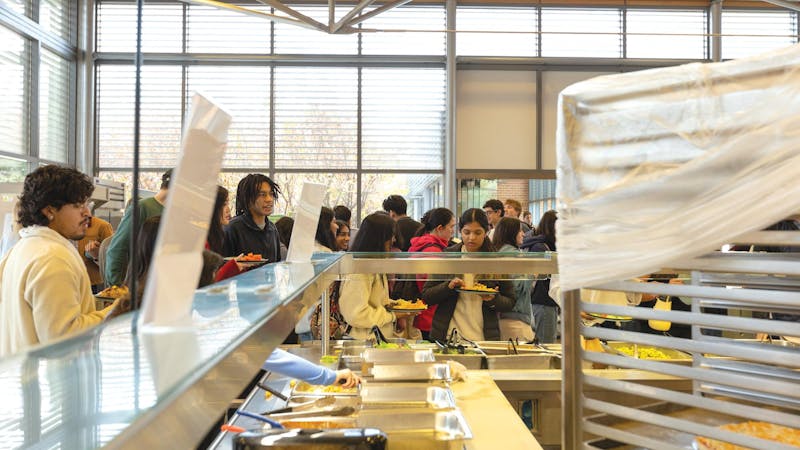Rice's Energy Crisis: The Quest for Light...
Though Houston may be a good city for concerts, multi-ethnic cuisine and shopping, it is not for cheap energy. At the end of fiscal year 2007-'08, which ended in June, Rice's total energy costs rose $4 million, from $12 million to $16 million. Director of Sustainability Richard Johnson (Will Rice '92) said this jump is attributed to the rising costs of energy and not to increased consumption. For students, this jump in energy prices may show up in future on-campus housing costs, Johnson said.Energy includes electricity; chilled water, for air conditioning; and steam, for heat, which service most of the buildings on campus. Johnson said Rice is not using any more energy per square foot than it has in the past, though due to the rising energy costs the school is under more pressure to reduce its energy consumption.
"It's as if you're drinking the same gallon of milk each week that you always have, but the price has gone from $2.50 a gallon to $5.00 a gallon," Johnson said.
Johnson said this year's figure is a far cry from the $4 million Rice paid almost ten years ago for energy.
"We're no longer in an era of cheap energy," Johnson said.
The science buildings, most notably George R. Brown Hall, are the biggest consumers of energy on campus, Johnson said. Unlike most campus buildings, which recirculate the air, science buildings use single-pass air - air that cannot be recirculated - as lab rooms may contain contaminants. Instead, the air exits through exhaust. Residential colleges and serveries, meanwhile, use about 20 percent of on-campus energy. Mudd Building is a large consumer of energy as it houses many computer servers, which require electrical energy. The heat generated by computers also requires more air conditioning, which in turn consumes more energy.
Newly-built facilities on campus are not increasing energy costs per square foot, Johnson said.
Johnson said many students may get the wrong idea about energy consumption given the fixed price of housing and dining.
"What a lot of students don't necessarily know is that they pay for electricity costs with [Housing and Dining] expenses," Johnson said.
Johnson said Facilities, Engineering & Planning, as well as the energy steering committee, is looking to reduce the energy used on campus starting with the thermostat. Johnson said he recommends setting the thermostat at 76-77 degrees Fahrenheit in the summer and maintaining a temperature of about 70 degrees Fahrenheit in the winter. Following the success of last October's residential college energy-saving competition, which decreased energy usage by $15,000, Johnson said he hopes to plan a similar competition this fall.
Using technology developed at Rice, FE&P headquarters can now see their expected energy usage - the baseline - for a given day based on the weather conditions outside. If the building is operating below the expected energy levels, the energy management system will compile the data to see how much energy is being saved. Johnson said FE&P plans to install this tool in multiple buildings across campus to give students, faculty and staff a real-time demonstration of energy conservation.
"If you give people real-time feedback, that's more powerful than just saying, 'Turn off your lights,'" Johnson said.
Energy-saving features will be present in the new Duncan and McMurtry Colleges, which are scheduled to open next fall. Thermostats will automatically turn off when windows are opened, and the building will be Leadership in Energy and Environmental Design (LEED) certified.
Housing Operations Manager Mark Chaszar said housing and dining costs, which rose $200 from last year's $3, 375, typically rise due to inflation and utility costs. He said students will not be expected to contribute $4 million in rent to make up the energy costs, though he said determining where that money will come from is a topic of discussion for next year's budget.
More from The Rice Thresher

Over 1,000 students petition against new meal plan
When Konstantin Savvon opened the Housing and Dining email announcing the new unlimited meal plan, he was instantly concerned about the impact on off-campus students like himself.

Rice football wins season opener under new coach
For the first time since 2018, Rice football opened its season with a victory. Scott Abell was soaked with yellow Powerade following a 14-12 win on the road Saturday against the University of Louisiana at Lafayette, which won 10 games and made it to the Sun Belt Conference championship last season.

Acting like an athlete: Rice basketball alum takes on Broadway
Underneath Chadd Alexander’s Broadway costume, there’s ankle tape and wrist braces — same protective gear he wore as a walk-on basketball player at Rice, though now he’s performing eight shows a week in the ensemble of “Harry Potter and the Cursed Child” instead of running conditioning drills in Tudor Fieldhouse.

Please note All comments are eligible for publication by The Rice Thresher.